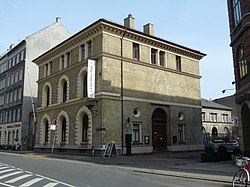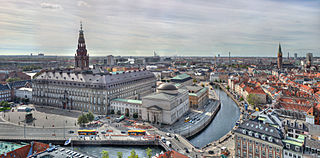
Copenhagen is the capital and most populous city of Denmark, with a population of 1.4 million in the urban area. The city is situated on the islands of Zealand and Amager, separated from Malmö, Sweden, by the Øresund strait. The Øresund Bridge connects the two cities by rail and road.
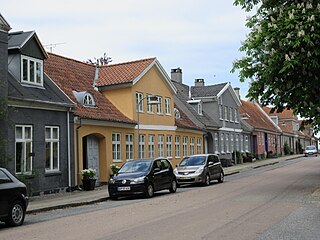
Hørsholm is an urban area on the Øresund coast approximately 25 km (15.53 mi) north of Copenhagen, Denmark. It covers most of Hørsholm Municipality and straddles the borders neighbouring Fredensborg Municipality and Rudersdal Municipality.
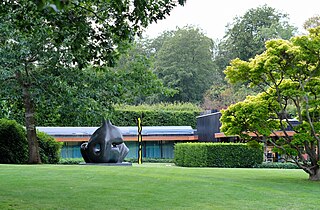
The Louisiana Museum of Modern Art, also known as just Louisiana, is an art museum located on the shore of the Øresund Sound in Humlebæk, 35 km (22 mi) north of Copenhagen, Denmark. It is the most visited art museum in Denmark, and has an extensive permanent collection of modern and contemporary art, dating from World War II to the present day; in addition, it has a comprehensive programme of special exhibitions. The museum is also acknowledged as a milestone in modern Danish architecture, and is noted for its synthesis of art, architecture, and landscape, such as was showcased in an installation entitled "Riverbed" shown in 2014–2015. It has been called a "Danish beacon in the international art world." The museum occasionally also stages exhibitions of work by the great impressionists and expressionists, such as Claude Monet, who was the focus of a major exhibition in 1994. It has between 600,000–700,000 visitors per year, 17–33% of whom reside in nearby Sweden.

Nørrebro is one of the 10 official districts of Copenhagen Municipality, Denmark. It is northwest of the city centre, beyond the location of the old Northern Gate (Nørreport), which, until dismantled in 1856, was near the current Nørreport station.

Halifax City Hall is the home of municipal government in Halifax, Nova Scotia, Canada. Designed by architect Edward Elliot, and constructed for the City of Halifax between 1887 and 1890, it is one of the oldest and largest public buildings in Nova Scotia. The property was designated a National Historic Site of Canada in 1997.

Cisternerne is an exhibition space for contemporary art in Copenhagen, Denmark with one annual site-specific total experience - and a wide range of events during the year. Cisternerne is an integral part of the Frederiksberg Museums (Frederiksbergmuseerne) where the singularity of its architecture and atmosphere remains a core attraction.

The Copenhagen Zoological Museum was a separate zoological museum in Copenhagen, Denmark. It is now a part of the Natural History Museum of Denmark, which is affiliated with the University of Copenhagen. The separate museum location closed in 2022, but will reopen in 2025 in new and considerably larger buildings in the northeastern corner of the Copenhagen Botanical Garden. Although the museum will be relocated, the research and storage facilities at its old location have been maintained.

Vesterbrogade is the main shopping street of the Vesterbro district of Copenhagen, Denmark. The 1.5 km long street runs from the City Hall Square in the east to Pile Allé in Frederiksberg in the west where it turns into Roskildevej. On its way, it passes Copenhagen Central Station as well as the small triangular square Vesterbros Torv. It is one of four such -bro streets, the other being Nørrebrogade, Østerbrogade and Amagerbrogade.

H. C. Ørsted Power Station is a natural gas fired combined heat and power station located at Enghave Brygge, Sydhavnen in Copenhagen, Denmark. It is owned and operated by Ørsted.

Medical Museion is a museum and research unit in Copenhagen, Denmark, dedicated to the history of health and disease in a cultural perspective. Part of the Faculty of Health and Medical Sciences at University of Copenhagen, its principal area of interest is the recent history of the material and iconographic culture of biomedicine. It is based in a listed building from 1787 on Bredgade in Frederiksstaden.

Frieboeshvile is a Baroque-style country house in Kongens Lyngby north of Copenhagen, Denmark. It is located across the street from Sorgenfri Palace, where Lyngby Main Street meets Lyngby Kongevej. The house takes its name after Frederik Casper Conrad Frieboe who is buried in the grounds together with his wife and a few other family members. Its most notable former resident is Georg Ferdinand Duckwitz who played an important part in the Rescue of the Danish Jews during World War II.

The Storm P. Museum in Copenhagen, Denmark, is a biographical museum dedicated to the life and oeuvre of Danish humorist Robert Storm Petersen, popularly known as Storm P. In addition to his cartoons, the museum also displays his paintings, both oils and watercolours, and covers other aspects of his life, time and many-sided talent, as well as his extensive collection of smoking pipes and his studio which has been reconstructed on the first floor. The ground floor is used for special exhibitions. In connection with a renovation in 2012, the museum has broadened its profile to include humor, satire and cartoons more generally.
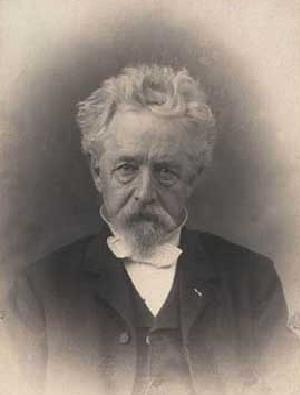
Vilhelm Klein was a Danish architect who adopted the Historicist approach, frequently emulating the so-called Rosenborg style and the Italian Renaissance style.

The South Campus is one of University of Copenhagen's four campuses in Copenhagen, Denmark. It is situated on Amager just south of Njalsgade, between Ørestad Boulevard and Amager Fælledvej, forming the northernmost part of Ørestad. It is home to the Faculty of Humanities which will later be joined by the Faculty of Theology and the Faculty of Law. Once completed, the campus will be home to about 12,000 students and researchers.

The Møinichen Mansion is a former town mansion on Købmagergade in central Copenhagen, Denmark. It later served as headquarters of Royal Danish Mail from 1779 until 1912 and was known as the Royal Mail House. Købmagergade Post Office, was located in the building until June 2015 while the Post & Rele Museum was located on the two upper floors from 1907 until 2015. The building was acquired by the PFA pension fund in December 2014 and is in use for both retail and offices.
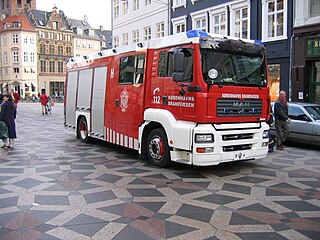
The Greater Copenhagen Fire Department forms the largest municipal fire brigade in Denmark with more than 1000 employees. This includes firefighters, ambulance personnel, administration and service workers and workers in fire prevention.

Industriens Hus is the home of the Confederation of Danish Industries. The building is located at the corner of H. C. Andersens Boulevard and Vesterbrogade, opposite the City Hall Square, in Copenhagen, Denmark. It also contains a showroom for green technologies, House of Green, as well as a series of two-storey flagship stores and restaurants on Vesterbrogade.

Helsingør City Museum is a local history museum in Helsingørm Denmark. The 16th-century building in which it is based is known as the Cammelite House although the Carmelite brothers from the adjacent Priory of Our Lady have in fact only built a minor part of the build.

Fælledvej is a street in the Nørrebro district of Copenhagen, Denmark. It links the major shopping street Nørrebrogade in the west with the square Sankt Hans Torv in the east.
Vesterfælledvej is a street in the Vesterbro district of Copenhagen, Denmark. The street runs from Vesterbrogade at Sorte Hest in the north to Vigerslev Allé in the south. The Carlsberg and Humleby neighbourhoods are located on the west side of the street.
